An intact ecosystem with bison, wolves, bears, moose, and more. Hydrothermal features, including nearly half of the world’s active geysers. Geologic wonders like the Grand Canyon of the Yellowstone River. Any one of these traits would be a must-visit destination. Yellowstone has them all and more.
Wildlife
On March 1, 1872, President Ulysses S. Grant signed the Yellowstone National Park Protection Act, creating the world’s first national park. All the large mammals present on that day are in Yellowstone today, including grizzly and black bears, mountain lions, elk, bison, pronghorn, moose, bighorn sheep, and wolves – which were reintroduced beginning in 1995.
We visited in August, when the bison rut takes place. We saw one bison sitting in the mud volcano area who appeared to be bleeding from an eye, possibly a goring injury resulting from the rut.
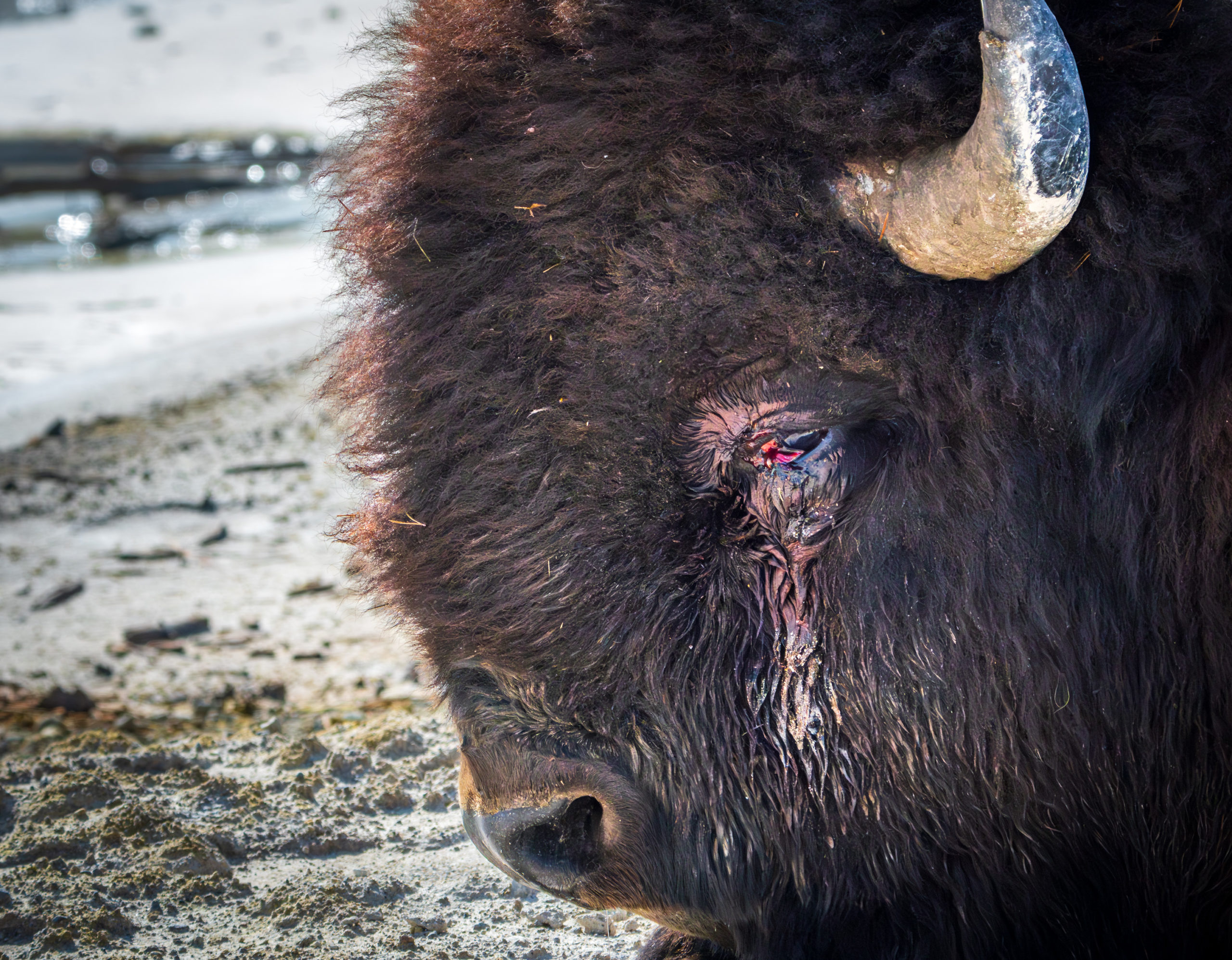
Bison are plentiful in Lamar and Hayden Valleys, where we watched playing calves , aggressive bulls, and more than a few dust baths.



We also got to observe the bison in other parts of the park, grazing in the grasslands or lying next to smelly geothermal areas.
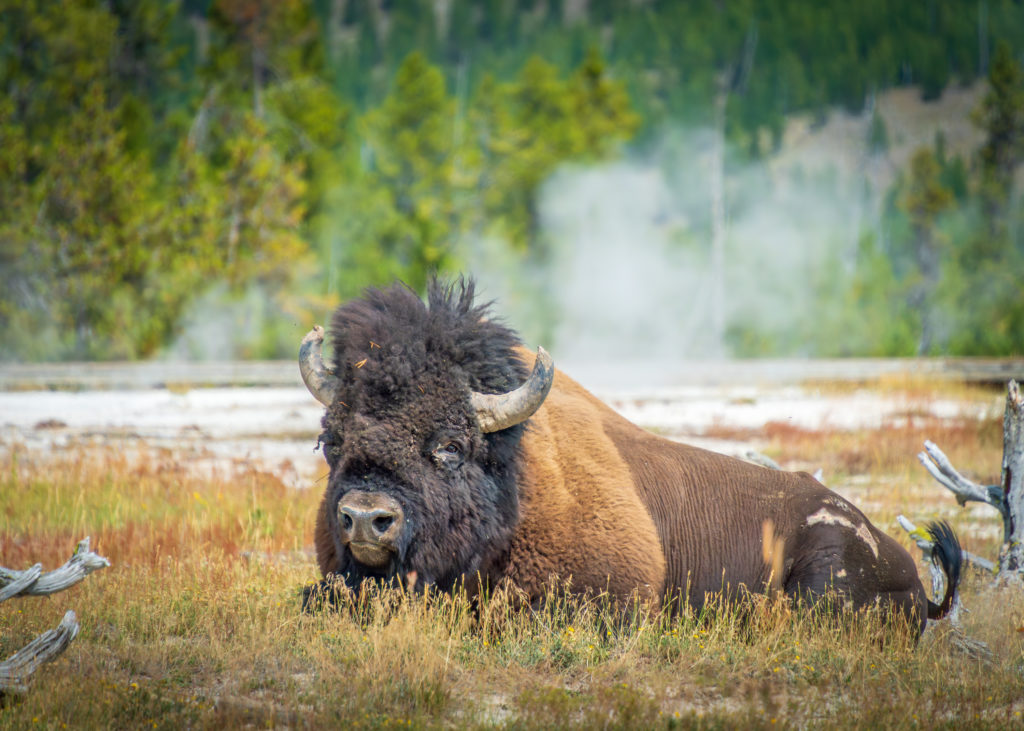
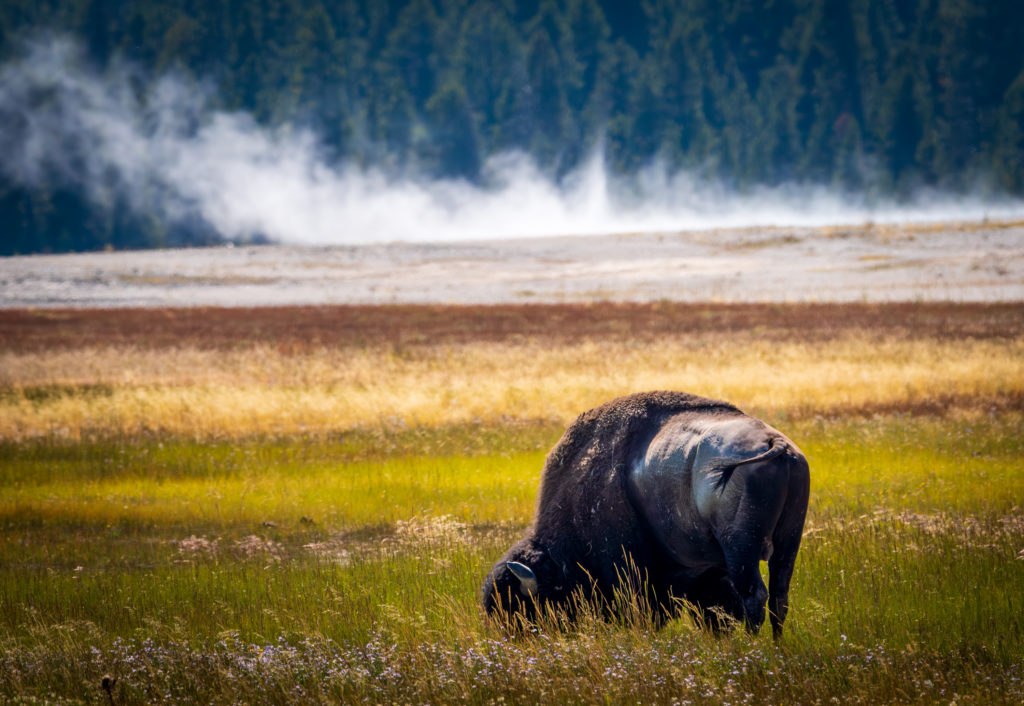
Pronghorn – sometimes incorrectly referred to as antelope – are the fastest land animal in North America, able to reach speeds of up to 45 miles per hour. Numbering about 500 within Yellowstone, we saw small groups of Pronghorn on a few occasions.

Of course, we also saw many other more common animals, including mule deer, elk, ravens, and ground squirrels.


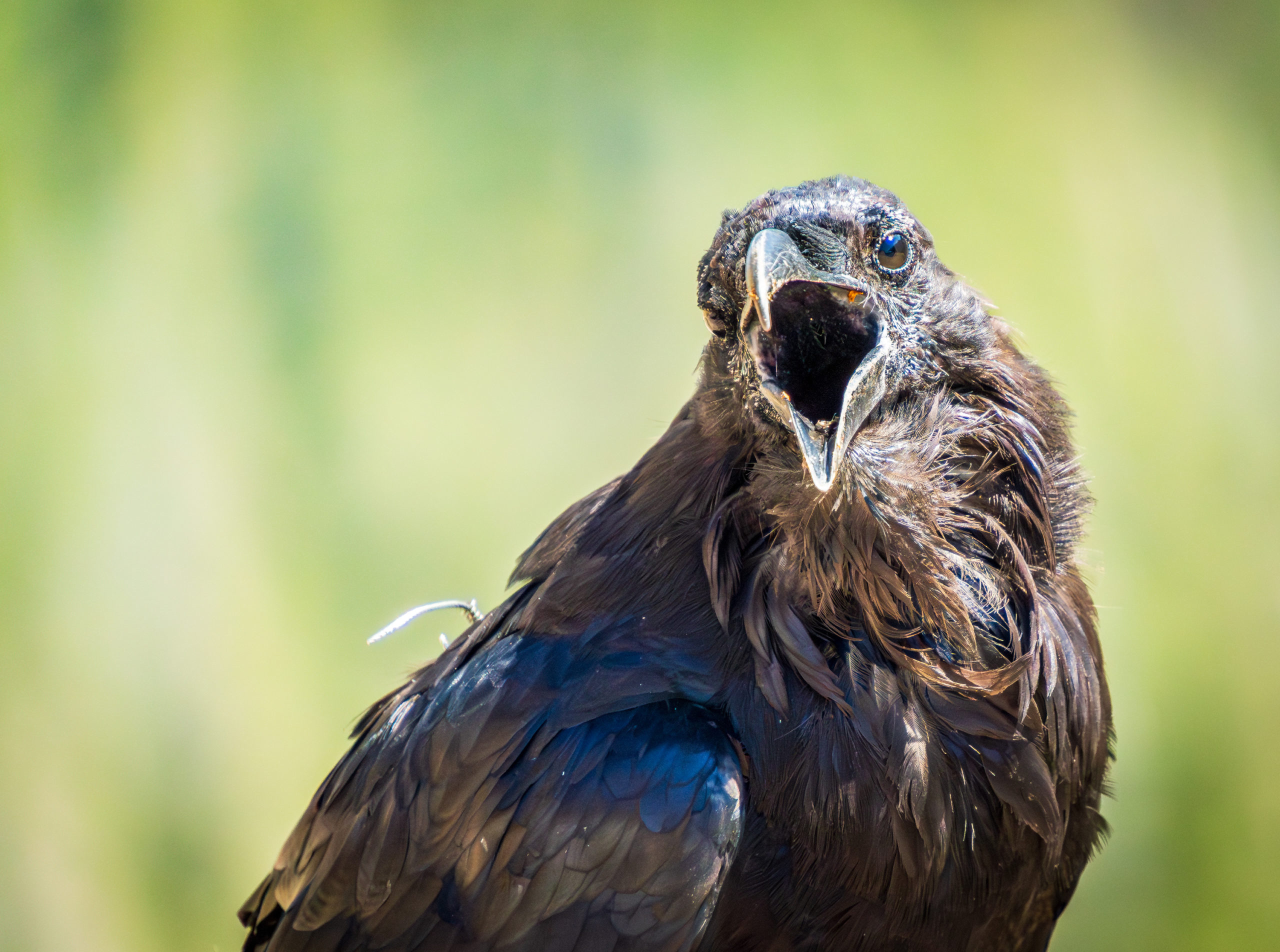

Hydrothermal Features
Perhaps what Yellowstone is most famous for are its more than 10,000 hydrothermal features including geysers, hot springs, mud pots, and steamvents – the visible expression of the Yellowstone caldera or supervolcano.
Grand Prismatic Spring
For me, the highlight were the colorful hot springs, including Grand Prismatic Spring in the Midway Geyser Basin, Yellowstone’s largest – more than a football field wide – and the third largest hot spring in the world.
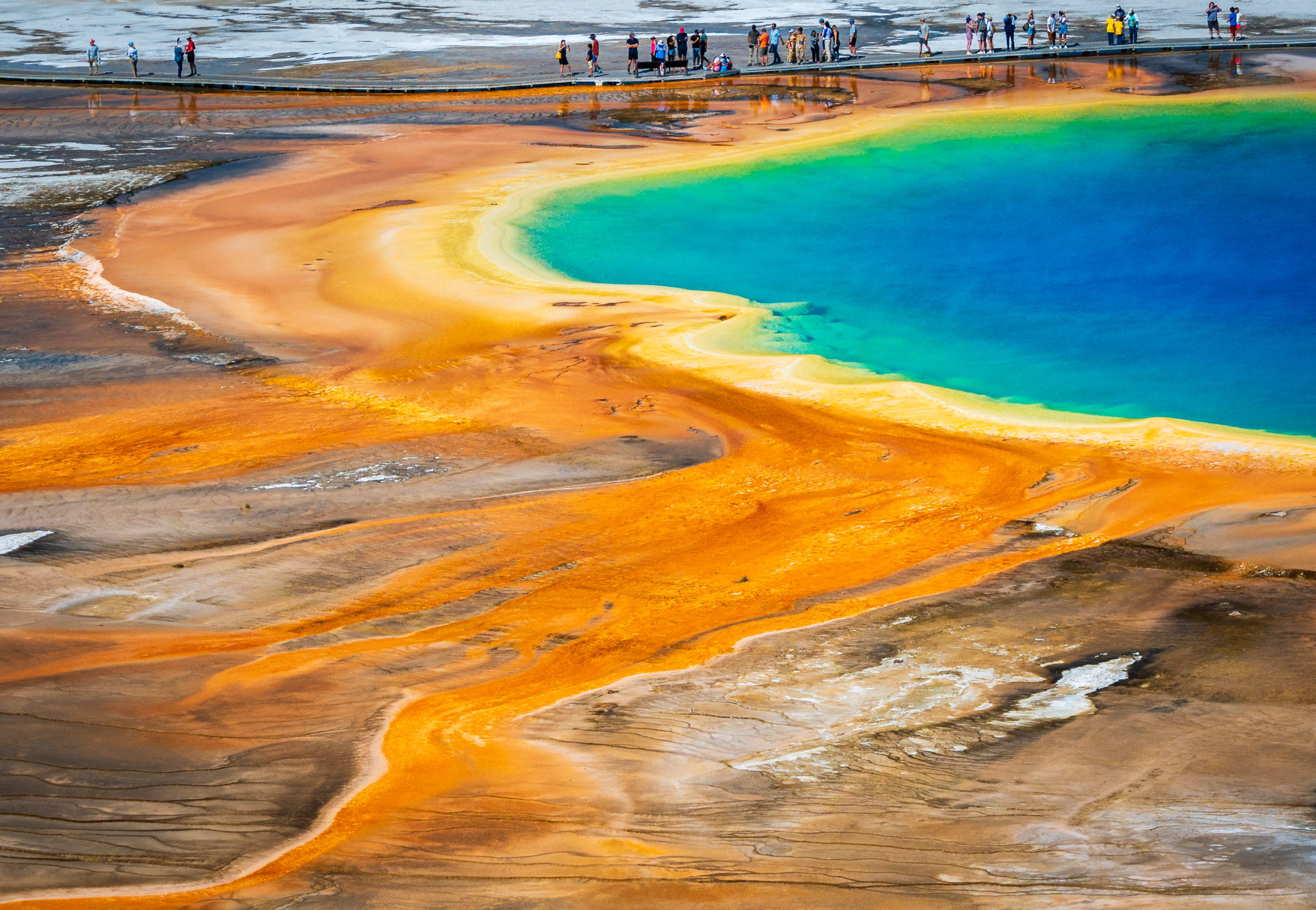

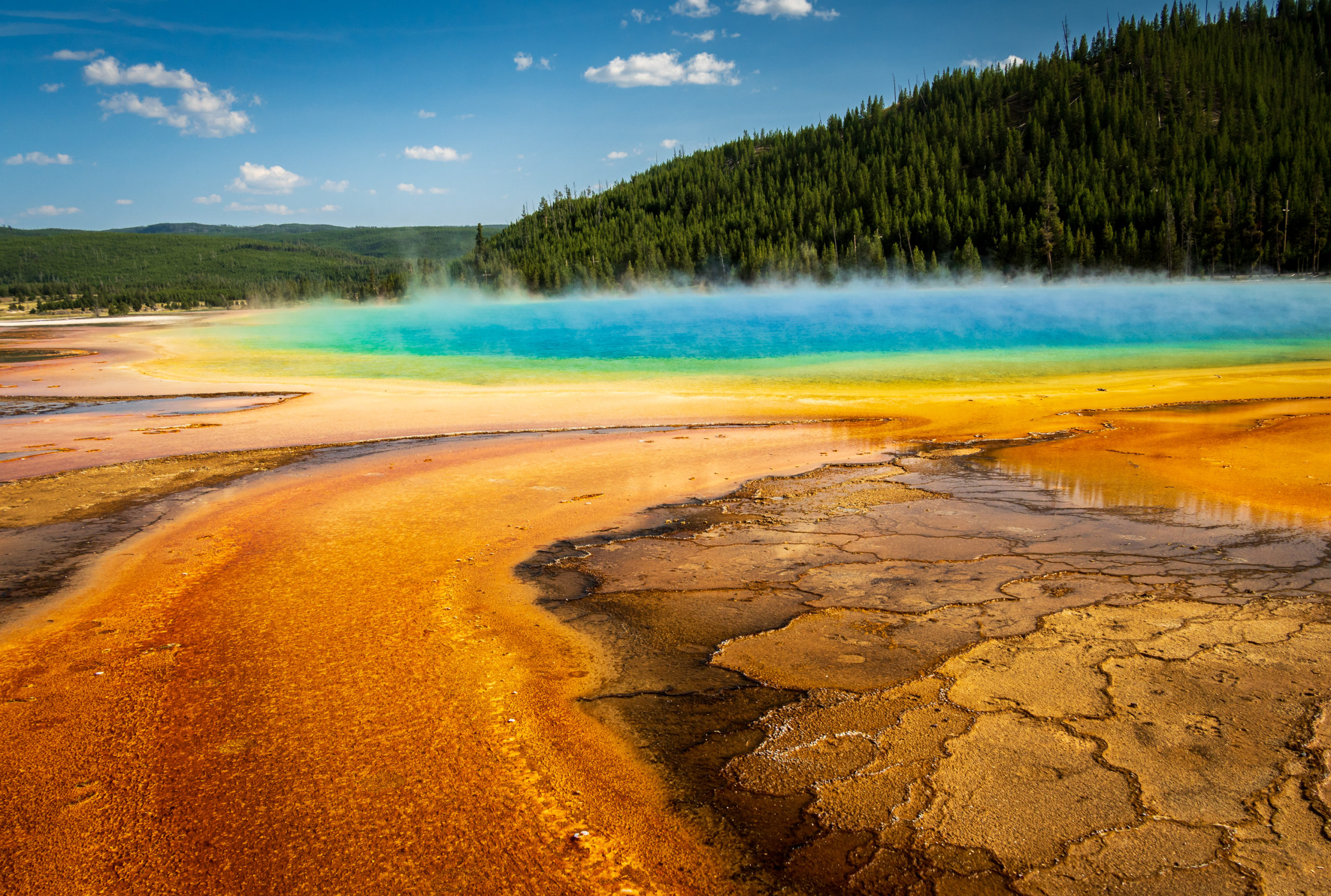
Sapphire Pool

Morning Glory Pool
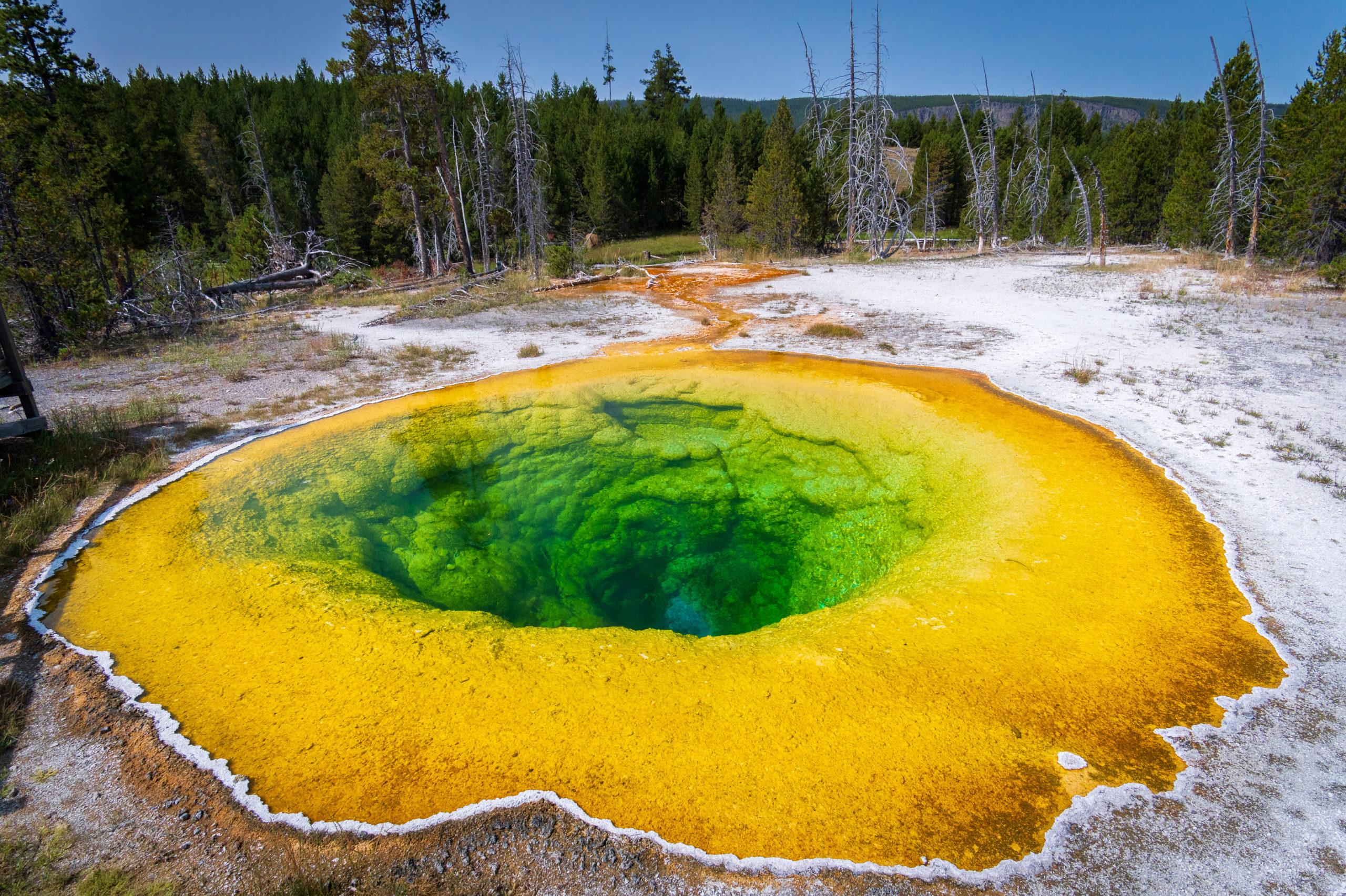

Chromatic Spring
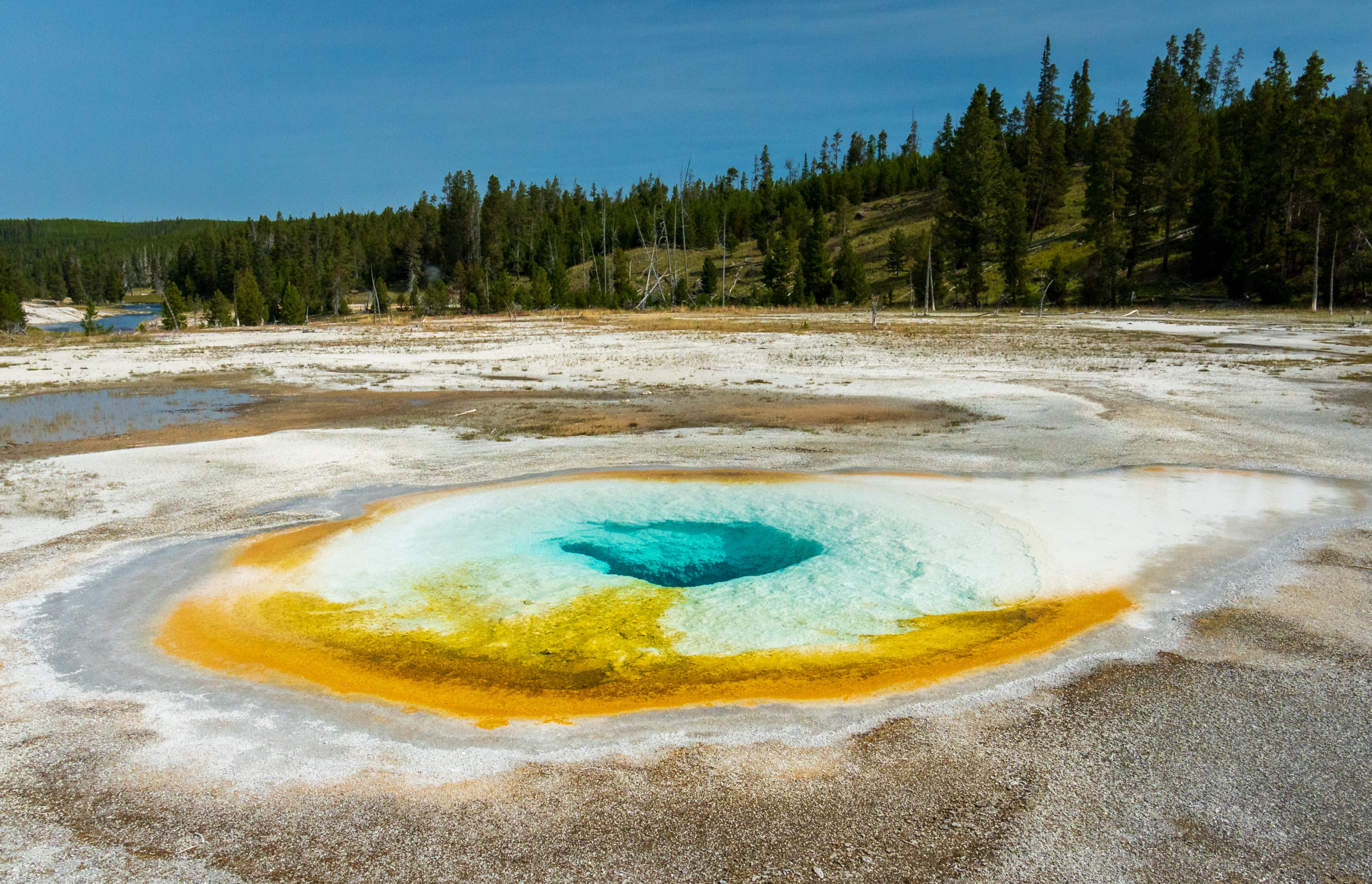
Heart Spring

Silex Spring
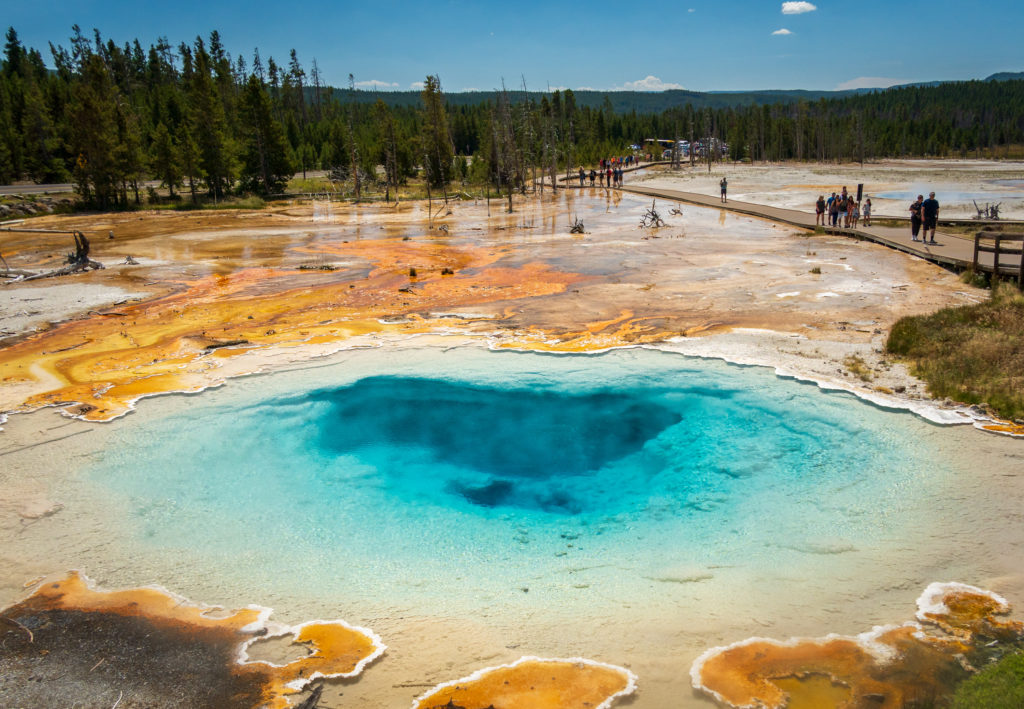
Black Pool and Yellowstone Lake
Next to Yellowstone Lake is the West Thumb Area of Yellowstone with several interesting hydrothermal features. Black Pool (named before it got hotter and changed color) is divided from the deep blue lake by a small spit of land and a boardwalk, creating an interesting contrast of colors.
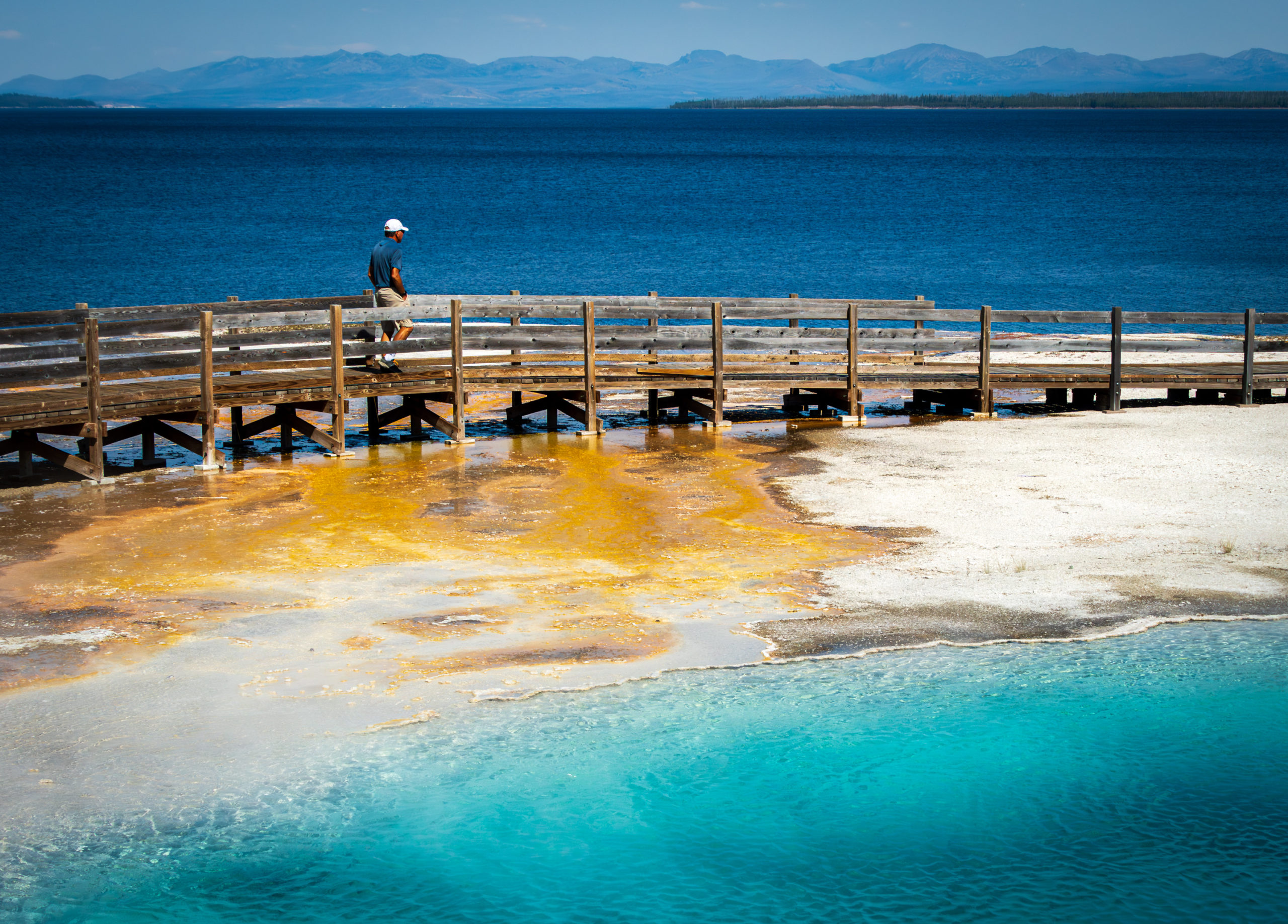
Canary Spring
The colorful Canary Spring and its travertine terraces made of limestone was my favorite part of the Mammoth Hot Springs Terraces.

Old Faithful
For many, the highlight of a visit to Yellowstone is to see the famous, predicable geyser. We took the half mile trail up to Observation Point on Geyser Hill to watch from above and to leave (some of) the crowds behind. While impressive, I found it to be among the least interesting aspects of the park – and that’s a testament to the other features of the park.

Grand Canyon of the Yellowstone
A gorgeous canyon would be a defining feature anywhere, but I consider Yellowstone’s unique and abundant wildlife and its hydrothermal features to be its most interesting features – and where we chose to spend the most time.
